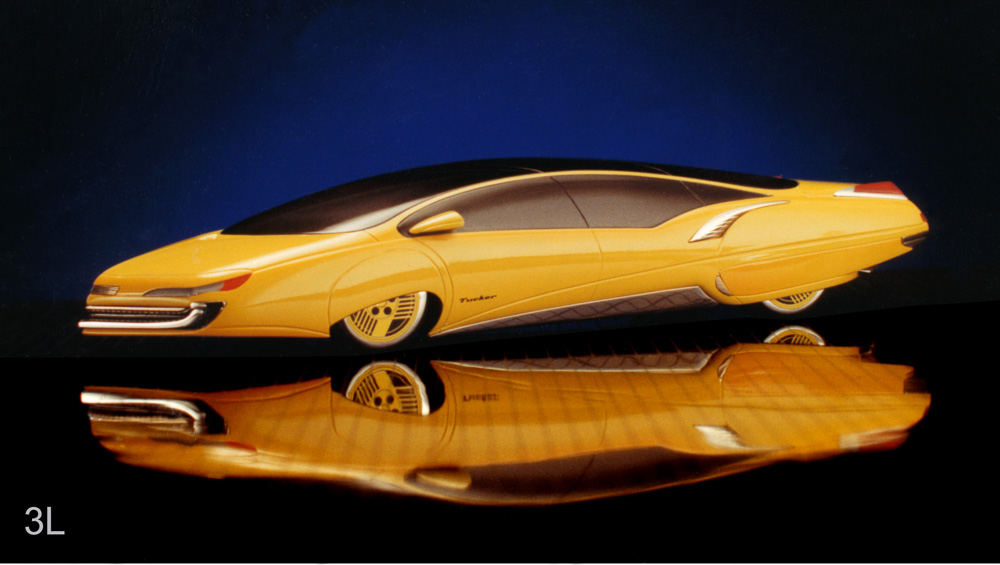
General Motors Futurliner, Parade of Progress, and the Fisher Body Craftsman’s Guild Connection
by Henry Rom
Contributed by Ron Will
In 1953, on my 3rd attempt, I won 4th place in the Senior Division of the Fisher Body Craftsman’s Guild model car design contest. I was the youngest winner in the Senior Division that year. During the Guild convention in Detroit all of the Regional and National winners were photographed in front of the impressive General Motors Futurliner.
The General Motors Futurliner fleet consisted of twelve custom vehicles. They were thirty three feet long, eight feet wide and eleven feet tall weighing more than twelve tons. All were identical in appearance, heavily styled in art deco bodywork.
The Futurliners were captivating as they represented a significant impact for the display of the companies Parade of Progress, a North American traveling exhibition promoting future cars and technologies.
The first tour was from 1936 to 1940. The second tour was from 1953 to 1956.
Our Futurliner photograph was taken just prior to the beginning of the second tour. It was dedicated to the Fisher Body Craftsman’s Guild. All the 1953 Convention Regional winners and Scholarship winners were photographed with the special unit. It was referred to as “Opportunities for Youth” which was displayed on the upper right side.
The Futurliner, number ten of twelve, contained contest information that included eight display sections to highlight recent scholarship winners. I was fortunate to have my model included as the Fourth National Scholarship winner in the Senior Division, the same year the new tour was to begin.
Receiving the scholarship award on live NBC National Television along with the Futurliner tour was a source of inspiration that will always remain with me.
At age forty nine, I decided to restore the first of my three contest entries, a First State Junior Division winner in Minnesota for the 1951 contest. In 1952 I received a Regional award that included a trip to the scholarship award convention in Detroit, Michigan. I was able to study the top entries, which allowed me to understand what was necessary to move up into scholarship contention.
Restoration of my 1951 model was replaced by redesigning. After many months of concentrated effort, the design and re-build was complete, thirty three years after it was originally entered in the Guild. I sent photographs to the late Charles Jordan, Vice President of all General Motors Design. He responded stating “It holds together well.” The model was also shown on the National television program “Motor Week”.
I proceeded to design and build seventeen additional models during a twenty-six year period, mostly in the eighties and nineties. They were the same scale as the Fisher Body Guild contest rules, one inch to one foot on a real vehicle. All were started by forming a basswood block. Basic line drawings were made for the type of car I had decided upon. The shaping of a perfected design took many months. The workmanship and craftsmanship portion then began. This was followed by a long period of paint finish preparation using diluted varnish as a sealer with primer coats applied. The process required considerable sanding. I achieved a seemingly perfect surface to accept the paint color and clear coat.
I had the thrill of selling four of my concept models on the actual auction block at the famous Barrett-Jackson Auction in Scottsdale, Arizona.
My avocation years were just as exciting as the three years of the contest entry.
Comment by Henry’s friend Ron Will: Even though Henry Rom never followed a career in auto design, it is evident from these photos of his models that he could quite easily have been a successful auto designer.
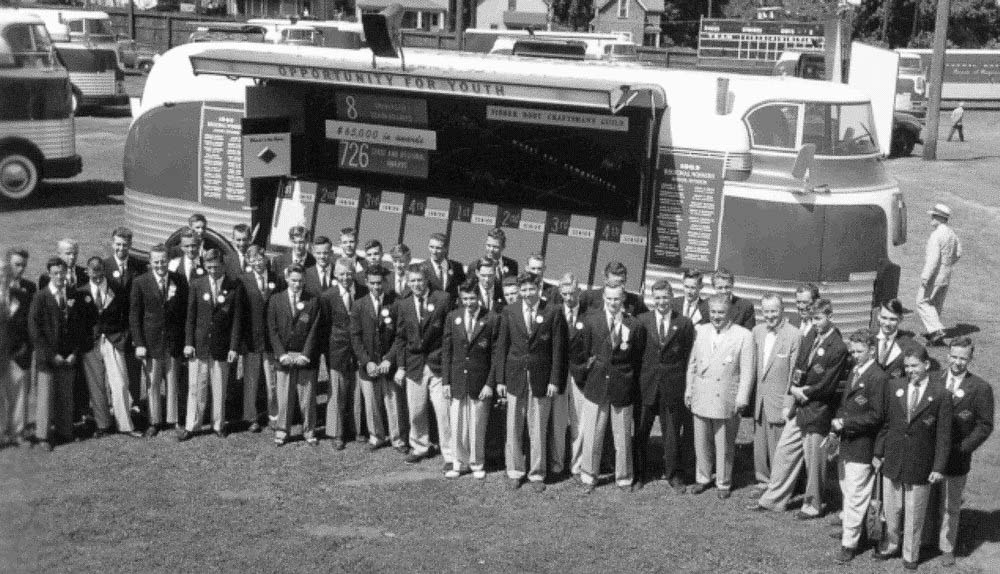
The 1953 GM Futurliner toured the U.S. featuring all eight National Fisher Guild winning models. “Opportunity for Youth” was the theme.
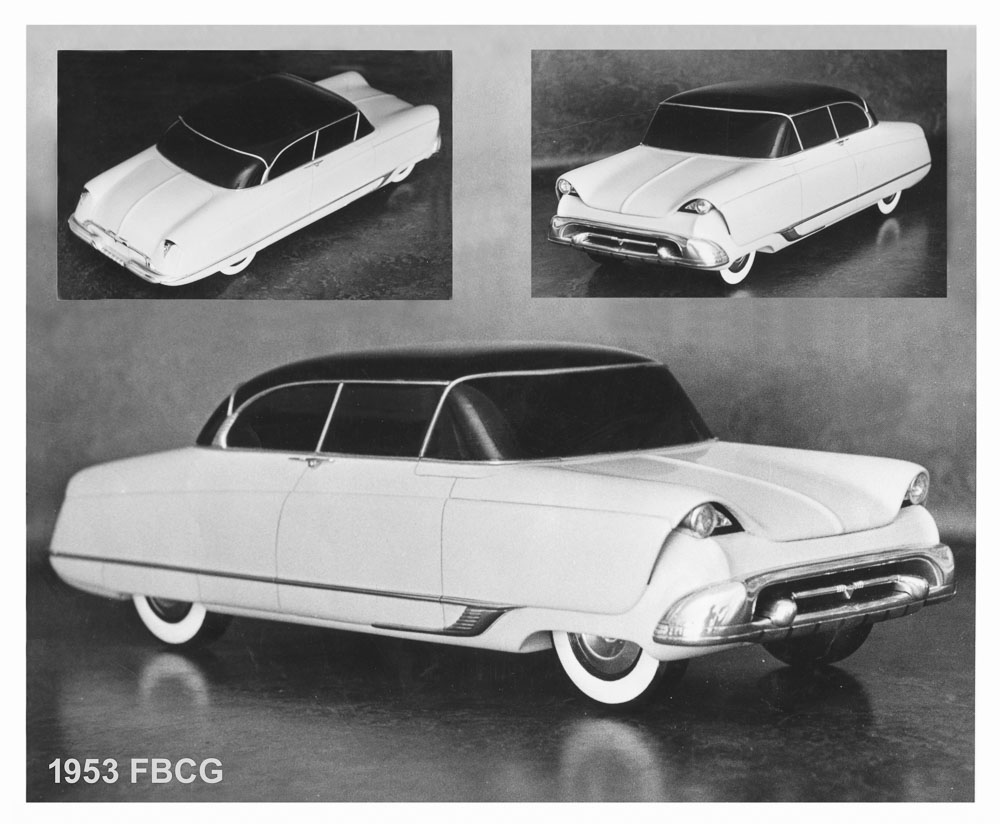
Henry’s 1953 Fisher Body Craftsman’s Guild entry won the 4th place national senior award. All models in 1953 had to be 2- or 4-door sedans.
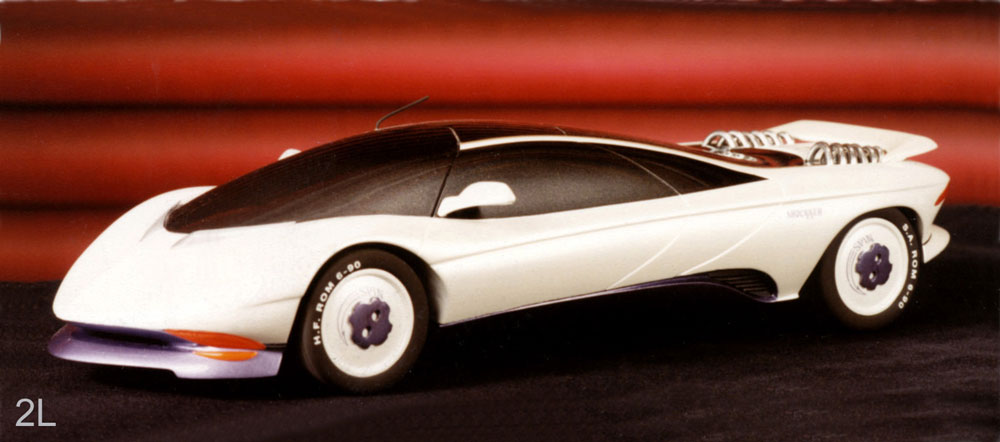
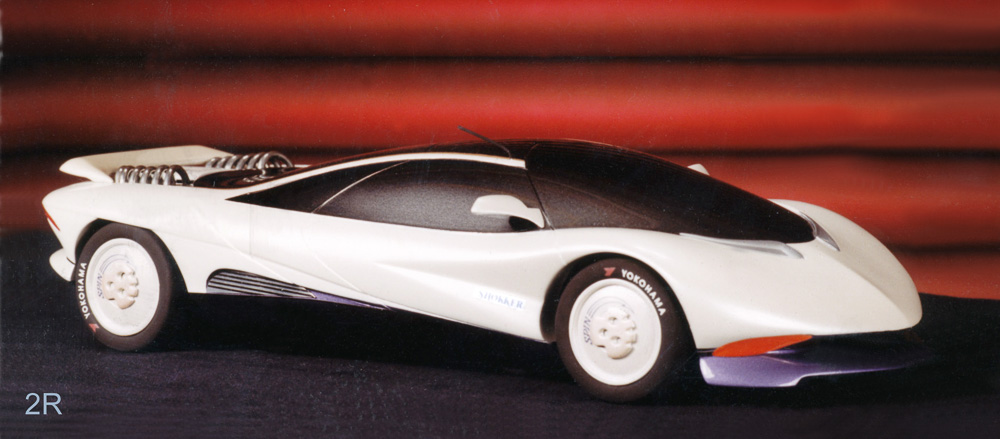
# 2L & 2R Mid-Engine concept: This White long wheelbase exposed mid-engine design features two different designs, left and right. Note unique cut accent speed lines on the 2L side.

# 3L Future Tucker Concept: This low slung yellow beauty used cues from the Tucker and even appeared on the cover of Autoweek.
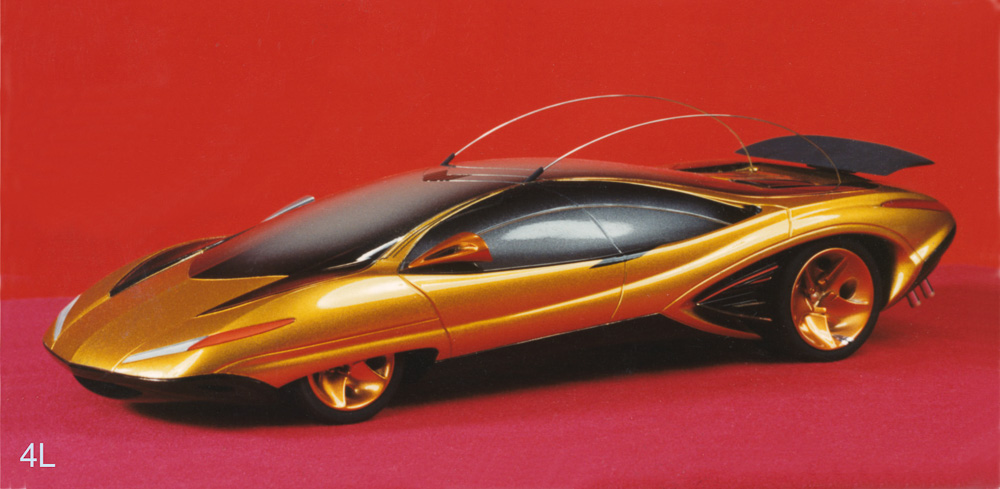
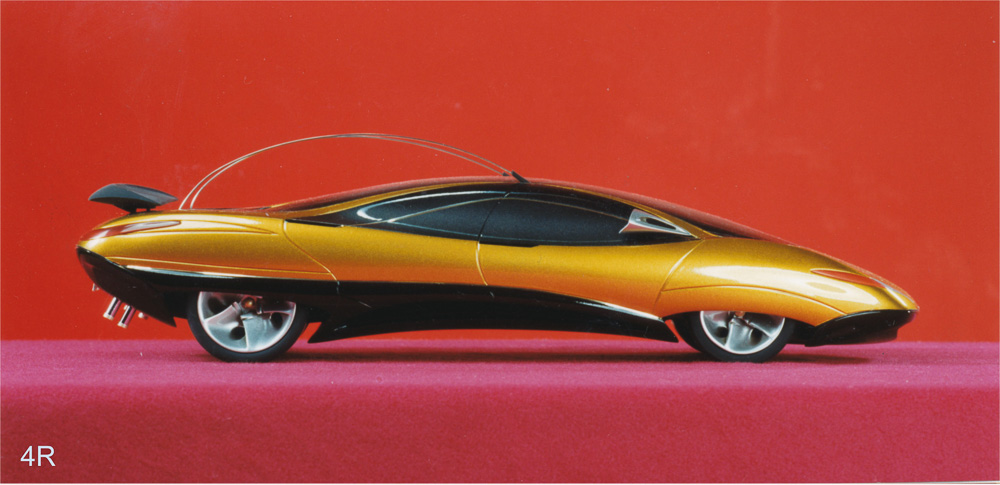
# 4L & 4R Four Door Sports Car: Henry’s theme for this Gold and Black beauty was a strong motorcycle image. Each side is different but each has a well worked-out design. The whip antennas add a unique design element.
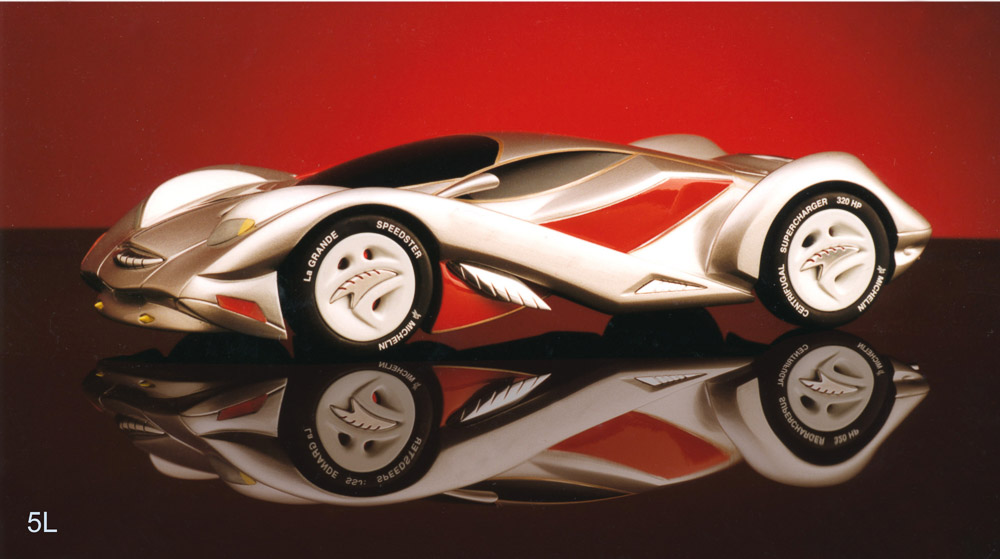
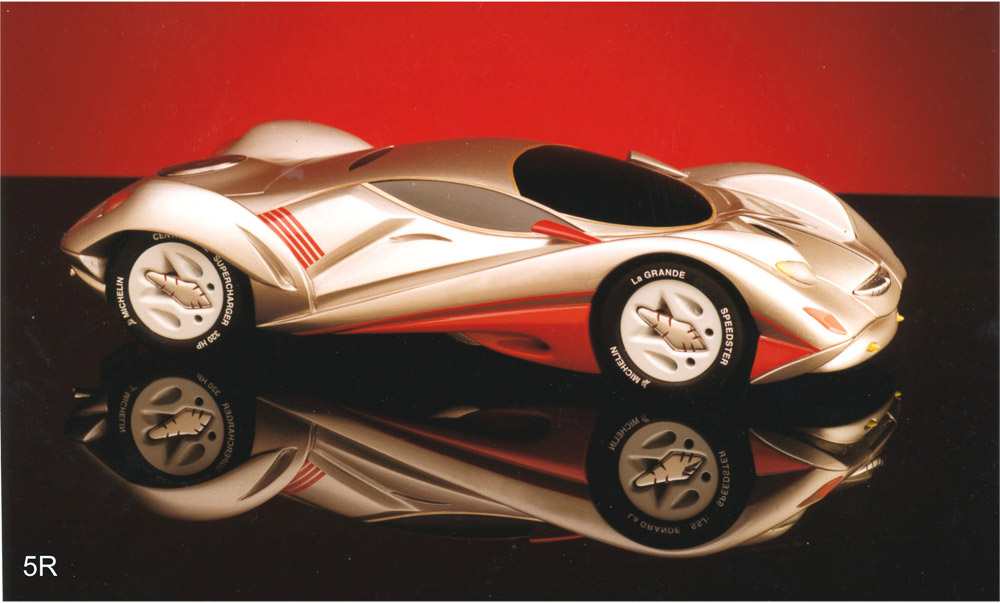
# 5L & 5R Two-Tone Gold and Red Sports Car: Inspired by the sporty two-tone sporty roadsters like the Duesenbergs of the 1930s, Henry again created two side designs. They were his most challenging complex designs that took him 4-½ years to complete. On the 5L side note the image of the retro 1930s side hood exhaust, as seen on race cars and sporty roadsters of the time. This design detail is repeated in the wheel design.
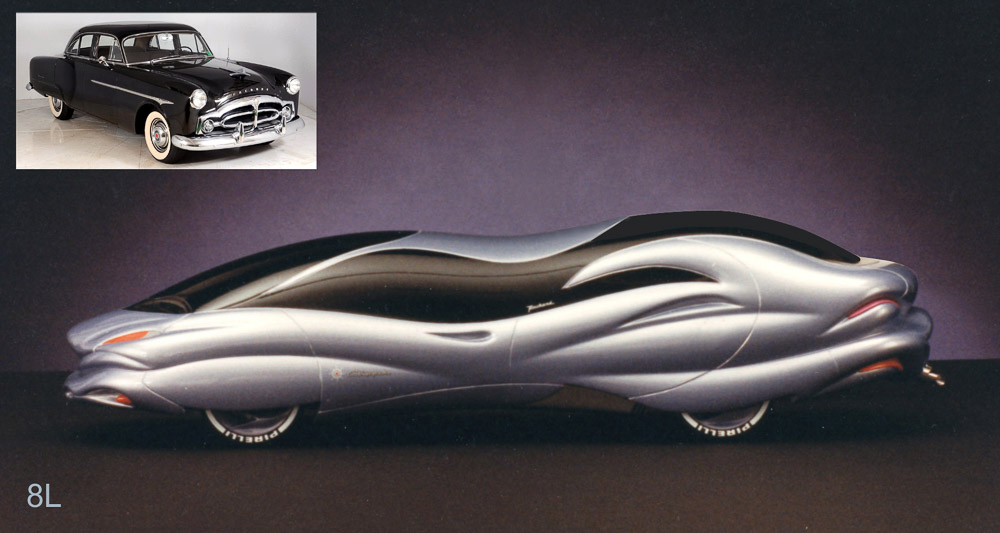
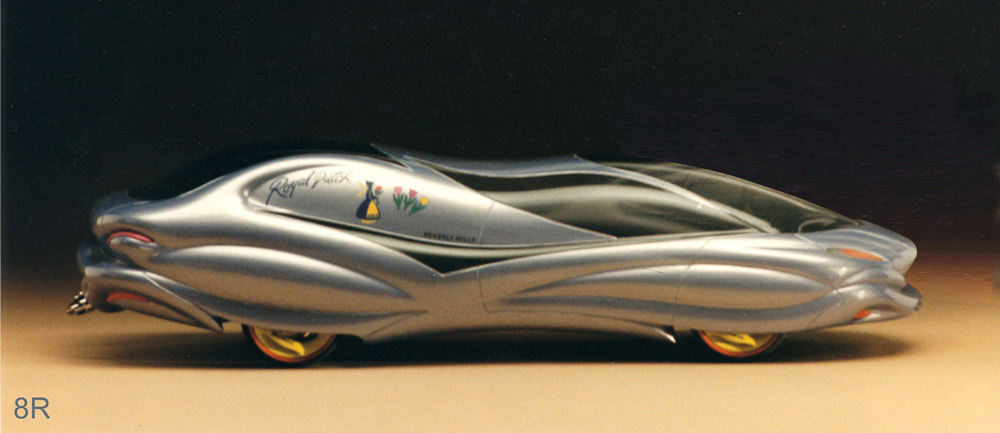
# 8L & 8R Large Metallic Gray Multi-passenger or Van type vehicle. This completely out-of-the-box design would easily find a place as a modern sculpture at MOMA, perhaps designed by Picasso. It has a double roof for two sets of passengers (8L) or as a passengers front and Town Panel Delivery Van back (8R). This large vehicle was inspired by Henry’s early viewing of the extremely large 1951 Packard sedans. This is a sculptural answer to the Boxy minivans of the day (1994) and appeared in several auto magazines.
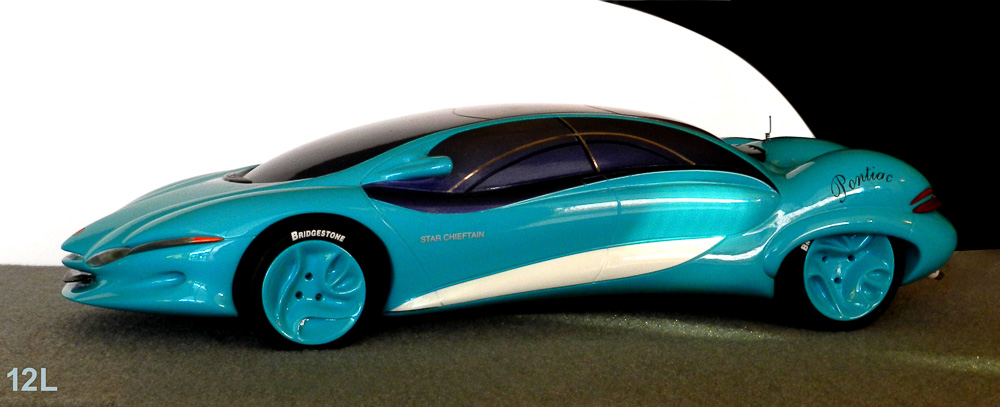
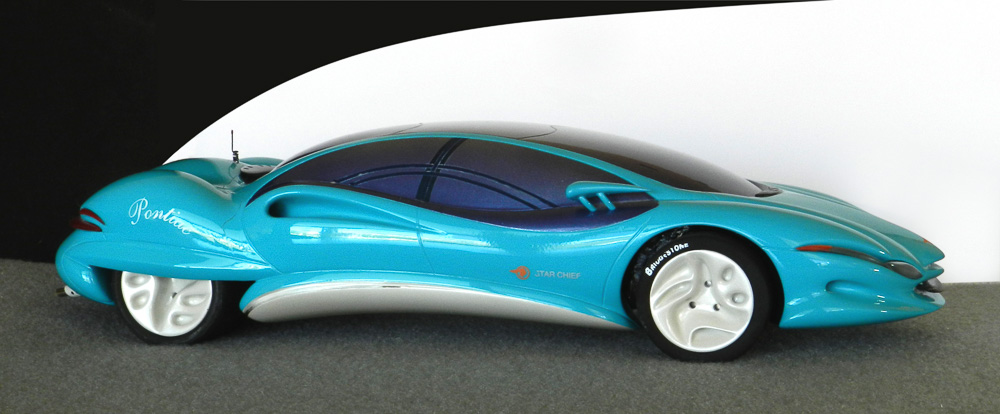
#12L & 12R Rear Engine Teal Blue Four-Door Pontiac Sports Sedan: Chuck Jordan called Henry and was impressed with all the work put into the design. Jordan said the design had “Waves.”
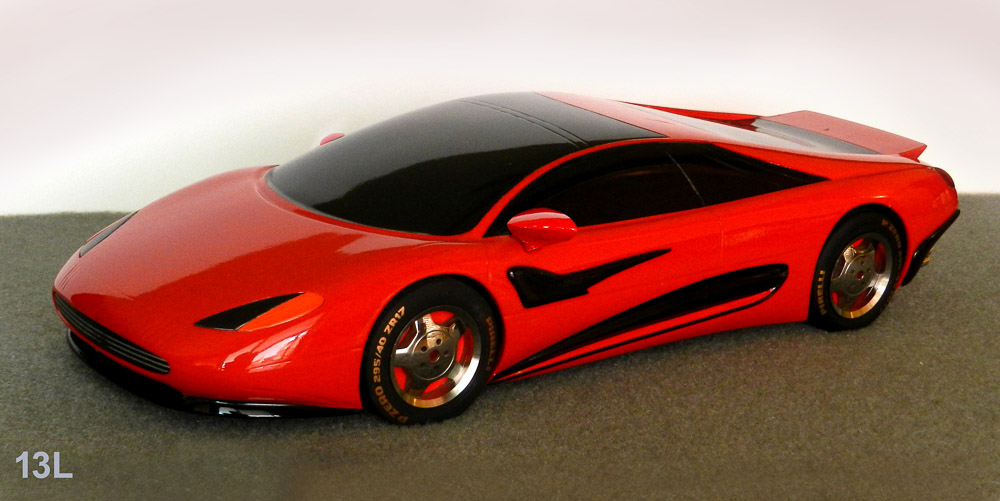
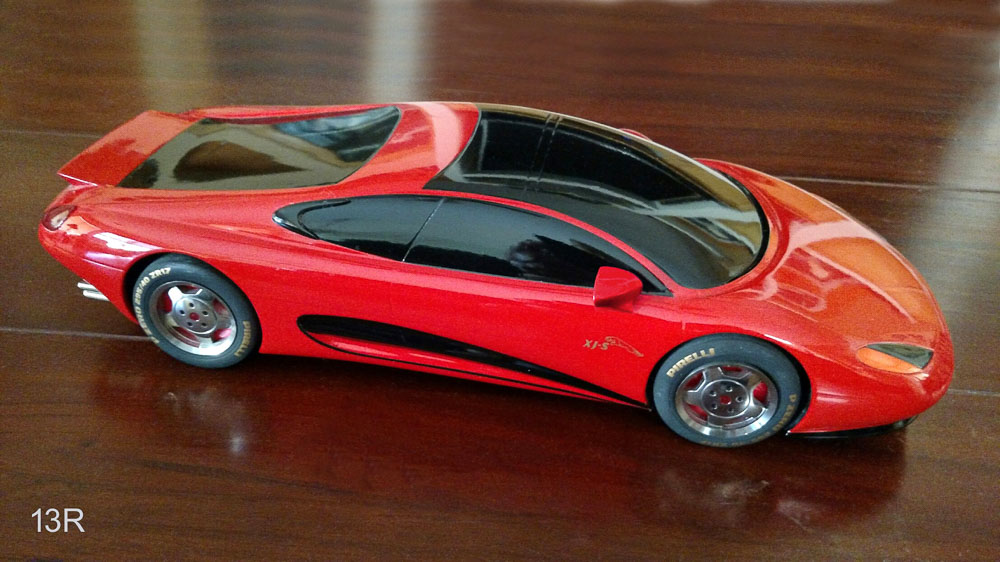
#13L & 13R Red Jaguar XJ-220 Mid-Engine Concept: Henry’s Jag is much more refined than the actual heavy looking XJ-220. It also has the wrap-over-the-top wind screen that foresaw the design before Tesla applied it. Jaguar would be proud if this was one of their designs. Henry also details most of his tires. Pirelli P Zero racing tires are on the Jag.

Ron Will’s comment certainly captures the impression of every professional car designer who will view these images. Henry Rom clearly had an excellent early understanding of proportion and form development, skills that he appeared to advance as time went on.
I am wondering what he did to make a living and also if he ever thought of actually doing a full-size car? Interesting also are some of the playful themes that Ron has developed. It is the high quality of development that he has shown that allows these designs to be presented successfully.
Thanks Gary and Ron for bringing these beautifully finished and detailed automotive design models to light. And Ron, thank you for sharing them with all of us.
DICK RUZZIN
Henry Roms designs clearly show his personal evolution as a design talent and a craftsman extraordinare! His later designs remind me of the uninhibited creativity seen with Luigi Colanis work. I particularly like his interpretation of the Jaguar XJ 220, Image 13R.
Thanks Gary and Ron for showcasing Henry’s work for all to see…
John M. Mellberg,
Retired Automotive Designer,
‘66 FBCGUILD 2nd Sr. National Award Winner
Henry Rom
It is pretty impressive to see a body of work from a designer who without the incentive of financial reward or the gratification of seeing his designs produced, has been able to keep a lifelong passion for automotive design active. He continues to demonstrate a youthful exuberance in his execution of form. Seeing his models still elicits a WOW reaction. Good Job, Henry!!
Bruce Wheeler AFAS
I met Henry Rom through my wife back in the mid 80’s. I saw his work and was impressed then as much as I am now. He designs were detailed with perfection and forethought. It is always great to share his knowledge, passion and enthusiasm for his work. The web site is a great tribute to his creations.
Thanks for this exciting article. Rom is a very creative and imaginative designer and craftsman. Hard to imagine he was not in the car biz with that level of talent!